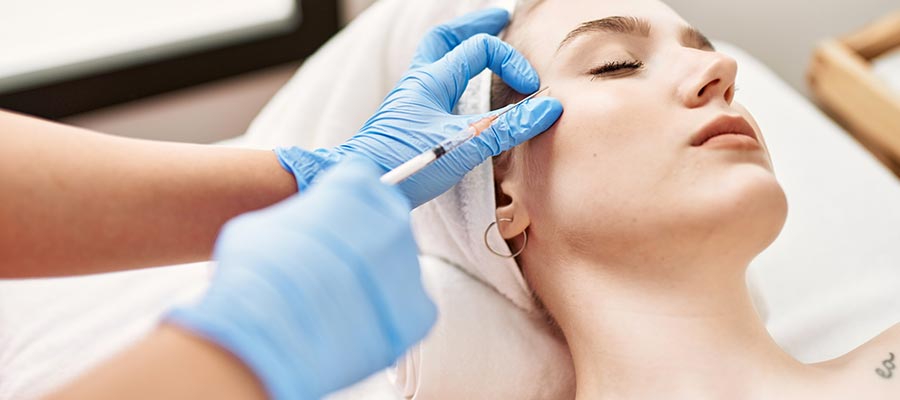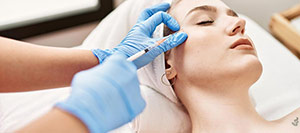Botox Level 2 Class at Salt Boutique Labs Med Spa in Wappingers Falls, NY
Common questions asked by the client: What is the Botox Level 2 Class? How long is the Botox Level 2 Class? What makes the Botox Level 2 Class different from the Botox Level 1 Class? How do I register for the Botox Level 2 Class? For more information, contact us or request an appointment online. We serve patients from Wappingers Falls NY, Spackenkill NY, Poughkeepsie NY, Beacon NY, Fishkill NY, East Fishkill NY, Rhinebeck NY, Millbrook NY, and surrounding areas.


Botox Level 2 Description
Botox Level 2 is for medical professionals (RN, NP, PA, MD, DO, DDS) who already have basic knowledge and skills from an introductory course or experience. This class is one day of hands-on training with a second to follow Dr. Reina. It will build on foundational techniques and delve deeper into advanced treatments, refining injection techniques, expanding the scope of areas treated, and troubleshooting more complex cases.
1. Introduction: Refining Skills for Advanced Botox Treatments
• Review of Fundamentals: Will briefly review basic Botox principles—anatomy, dosages, dilution, and injection techniques. This is a refresher for those already familiar with these concepts.
• What’s New at Level 2: This level is about refining skills and deepening knowledge. It’s for professionals who want to expand their repertoire and tackle more advanced treatment areas and complications.
2. Expanding Treatment Areas
• Beyond Common Areas: Level 2 will focus on additional or more challenging areas of treatment. These might include:
• Brow Lift Techniques: Understanding the nuances of lifting the brow and correcting asymmetry.
• Gummy Smile: Targeting the upper lip muscles to reduce the visibility of gums.
• Focus: Will cover both upper & lower face.
3. Advanced Injection Techniques
• Multiple Injection Points: Students will learn how to administer multiple Botox injections in a single area to achieve more precise, even results.
• Layered Treatments: The concept of combining Botox with dermal fillers for comprehensive facial rejuvenation (e.g., Botox for wrinkles and fillers for volume restoration).
• Depth of Injection and Layering: How to adjust the depth of injections depending on the tissue being targeted (e.g., superficial for crow’s feet, deeper for masseters or neck).
• Microdosing Techniques: Introduction to the concept of using smaller, more precise doses of Botox for natural-looking results and preventing overcorrection.
4. Managing Complex Cases and Complications
• Facial Symmetry and Uneven Results: How to correct asymmetry post-treatment. Discuss how to make adjustments for a more balanced result.
• Treatment Failures and Touch-Ups: How to address situations where Botox results may not be as expected (e.g., over or under-treatment).
• Bridging the Gap Between Botched Results and Correction: Understanding how to fix common complications like drooping brows (ptosis), excessive Botox, or “frozen” expressions.
• Botox Overdose and Handling Side Effects: A review of rare, but important side effects like muscle weakness, botulism, and ptosis, along with how to manage and recognize these complications early.
5. Hands-On Practice
• Live Demonstrations: We will start with a live demonstration of advanced injection techniques in the more complex treatment areas covered in the class (e.g., jawline, neck, masseters).
• Student Practice with Supervision: Participants practice advanced techniques on models or volunteers. Provide detailed feedback and coaching on needle placement, injection depth, and volume control.
• Focus on Fine-Tuning: Further hands-on practice with more challenging aesthetic goals, such as correcting asymmetry or achieving a natural lift.
6. Post-Treatment and Aftercare
• Advanced Aftercare Protocols: A discussion of any specific aftercare protocols for advanced treatments (e.g., post-neck Botox care, minimizing swelling around the jawline).
• Managing Patient Expectations: Training on setting realistic expectations for patients, especially when dealing with less common treatment areas.
• Follow-Up and Monitoring Results: How to monitor patient results over the next few weeks, identify any issues, and advise follow-up appointments for touch-ups or adjustments.
• Before-and-After Documentation: Train students on the importance of documenting results for patient records, marketing, and future touch-ups.
7. Q&A and Final Tips
• Open Floor for Questions: Time for participants to ask questions about advanced techniques, patient management, or any concerns they have.




